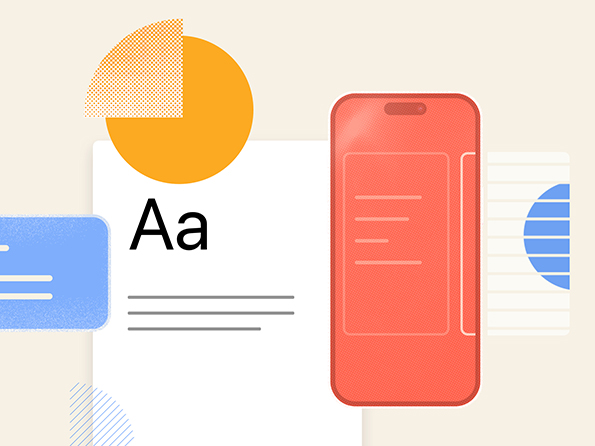12 Indicators That it’s Time for a New Website
To celebrate North Street’s 12th anniversary, we’re doing a dozen blog posts all around the number 12!
Your website is often the first time a prospective client or hire interacts with your brand; will it be their last?
How long ago you redesigned your site has a lot to do with that. An out-of-date website can do more damage than having no website at all.
Here are twelve indicators that it’s time for an overhaul:
1. Does your site take a long time to load pages?
Poorly optimized images and video, bloated code, loading unnecessary resources, and unsatisfactory server performance are just a few of the usual culprits that bog down your site speed. If you’re able to brew a fresh cup of coffee in the same amount of time it takes to load your website’s home page, duct-taping some fixes into place isn’t going to cut it — it’s time to consider a complete overhaul. It’s also worth noting that Google factors site speed into its algorithm for search ranking.
2. Does it look like garbage on a cell phone?
As of November 2022, 59.5% of global web traffic comes from people using mobile devices. Disregarding the mobile user experience can be catastrophic to your bottom line; you’re alienating almost 2/3 of your potential audience and telling them that you’re way behind the times.
3. Are you embarrassed to send people to your website?
A Stanford study found that 75% of people base the credibility of a business on how its website looks. Further, a staggering 94% of users say poor web design fosters feelings of mistrust. If your audience doesn’t trust you, you’ve lost all hopes of a conversion.
4. Do you feel a pit in your stomach upon seeing a competitor’s recently redesigned website?
Look at the websites of your closest competitors through the lens of prospective users, customers, and employees. Are there any that make you think “dang, those guys look like they know what they’re doing,” or “wow, that looks like a cool place to work”? Now, look at your site through the same lens. Are you getting good vibes or heebie-jeebies? If it’s the latter, consider how many potential opportunities you’re squandering.
5. Does your website tell people what you do – or what you did six years ago?
On average, companies redesign their websites every three years. Trends, technologies, and best practices change; so does your business. Does your website accurately describe the goods or services you offer today? Does it use industry language from this decade? Is the copyright year in your website footer the current year? If not, it’s time to start thinking about the image and messaging you’re putting out.
6. Are there photos of people on your website that no longer work there? And if they do still work there, are they significantly grayer or balder than when the photos were taken?
This is almost always one of our clients’ initial concerns when discussing a website redesign. The images of people on your site are a part of your branding, so they must remain as contemporary as the site’s design and functionality. How do you do that without needing a new photoshoot every time someone leaves or joins? Headshots should be styled and framed consistently and in an easily repeatable manner. For lifestyle shots and candids, we use focus, blur, and framing to obscure the faces of the people in the photos as best we can. We also try to capture moments, like a closeup of someone writing on a whiteboard or grabbing a branded coffee mug. These can be images or video (see our work on the Assured Investment Management Careers page for a video example).
7. Do users need a tour guide to find what they are looking for on your website?
A recent study found that the average human attention span has dropped from twelve seconds (2000) to eight seconds (2021) due to our increasingly digitized lifestyles. (For reference, a goldfish’s attention span averages around 9 seconds.)
If people can’t readily find what they are looking for when they land on your website, you will lose them. Ensure your navigation is descriptive and concise so as not to overwhelm them. Make sure each page leads off with a description of what information will be found on it. If you have an on-site search, consider using filters so that users can painlessly zero in on the type of content they are interested in (i.e., press release, commentary, bio, webinar, etc.).
8. Do you need a computer science degree to update your website’s backend?
Keeping your site’s content fresh and up to date should be easy peasy through a content management system such as WordPress. You shouldn’t need a CS degree or hacker skills to change text, update photos, add news, etc. A cumbersome or non-existent content management system will quickly lead to an outdated website. Unfortunately, plugging an existing site into a new content management system isn’t as simple as it may seem. More often than not, it’s more expensive and time-consuming than a total rebuild.
9. Are you invisible to Google?
If your website’s codebase is “vintage,” there’s no possible way it adheres to the best practices Google rewards for — best practices that are also constantly evolving, by the way. Even if your last redesign was relatively recent, we still see mistakes and oversights in code that won’t win favor with (or can even be penalized by) Google. Check out our articles on SEO best practices and Google’s search algorithm for more info.
10. Is your website social-friendly?
Social media networks can be a significant traffic driver to your website, so it’s in your best interest to optimize your presence on them, starting with your Open Graph tags. Open Graph is a protocol that enables any web page to become a rich object in a social graph. You can tell social media networks like Twitter, Facebook, Pinterest, and LinkedIn what information to display whenever you or anyone else shares a link from your site.
When you share content from your site to a social media network, their crawler will scrape the HTML of the shared URL. If there’s no Open Graph data, the scraper has to guess which content is important, and sometimes, they can be pretty…off. These posts usually end up with little to no user engagement. Still not convinced? Consider that Tumblr increased its Facebook traffic by 250% after implementing Open Graph.
11. Is your website ADA-compliant?
If you didn’t build your site with accessibility in mind, it’s time to consider a redo; ADA best practices must be built into your site’s codebase and design. Think of the millions of potential customers going elsewhere because they can’t use your site. Need another reason to do the right thing when it comes to accessibility? Google’s search bot basically works like a screen reader (a device the visually-impaired use to navigate websites), meaning better accessibility equals better search ranking. Here are 10 tips for ensuring your site is ADA accessible.
12. Are your URLs human-friendly?
Human-readable URLs, also called clean URLs, allow you to turn your URLs into a communication tool rather than a set of characters used to satisfy some technical constraint.
DO
https://www.yoursite.com/practices/data-privacy-cybersecurity/
DON’T
https://www.yoursite.com/data_privacy_security.html
https://www.yoursite.com/48484848/x/mount/x.cgi
https://www.yoursite.com/site_structure/pages/data.jsp
https://www.yoursite.com/page.php?section=data-privacy-cybersecurity
Clear URLs improve the website’s position in the search engines and increase the usability of the resource because they often include query keywords, which search engines respond positively to. They are also easier to remember and can improve site navigation.

About north street
We engineer the thoughtful transformation of great organizations. Our proven process helps us understand what your competitors are doing right — and wrong. Want to learn more? Let’s chat.



























